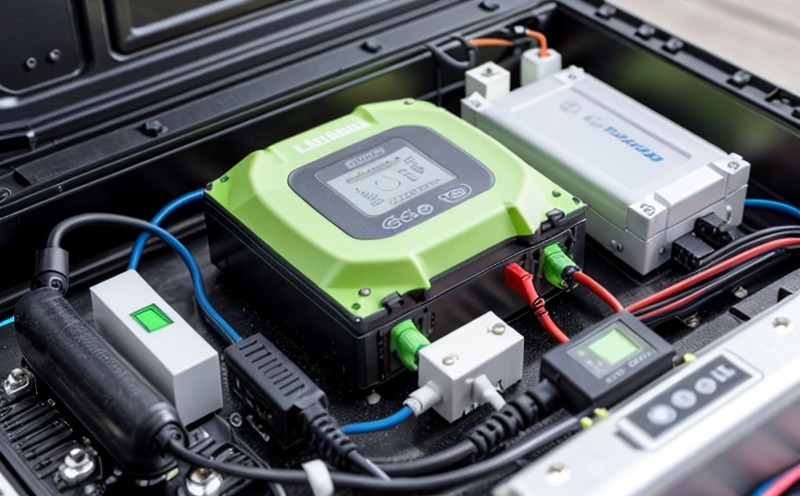ASTM F3147 Lithium-Ion Battery Environmental Stress Testing
The ASTM F3147 standard provides a comprehensive framework for testing lithium-ion batteries under environmental stress conditions. This service ensures that the batteries meet stringent performance requirements, enhancing their reliability and safety across various applications including consumer electronics, automotive, and energy storage systems.
Lithium-ion batteries are widely used due to their high energy density, long cycle life, and low self-discharge rates. However, they are also susceptible to environmental stresses such as temperature extremes, humidity variations, and mechanical impacts. ASTM F3147 addresses these challenges by subjecting the batteries to a series of controlled stress tests that simulate real-world conditions.
The testing protocol outlined in ASTM F3147 is designed to evaluate the battery's ability to withstand environmental stresses without compromising its performance or integrity. This includes both short-term and long-term exposure to different environments, ensuring that the battery remains reliable under a wide range of operating conditions. The tests are conducted using high-precision equipment tailored for environmental stress testing, which ensures accurate and reproducible results.
The process involves several key steps: specimen preparation, environmental chamber setup, test execution, and post-test analysis. Specimen preparation is crucial as it directly impacts the outcome of the tests. The batteries undergo thorough inspection to ensure they meet the specified standards before being placed in the environmental chambers. These chambers can simulate various environments such as high temperature, low temperature, humidity, vibration, and pressure.
Once the batteries are prepared, they are subjected to the prescribed stress conditions for a set duration. For instance, high-temperature testing may last for several hours or days depending on the specific requirements of ASTM F3147. During this period, data is continuously collected using advanced monitoring systems. These systems track parameters such as internal resistance, voltage, and temperature, providing real-time insights into the battery's performance under stress.
After completing all environmental stress tests, the batteries undergo post-test analysis to assess their overall condition. This includes visual inspection for any signs of damage or degradation, electrical testing to measure changes in capacity and impedance, and structural integrity checks using non-destructive testing methods like ultrasonic testing. The results are meticulously documented, forming a detailed report that highlights both the strengths and weaknesses of the tested batteries.
The ASTM F3147 protocol is particularly valuable for quality managers and compliance officers as it ensures that all lithium-ion batteries meet industry standards for safety and reliability. R&D engineers can leverage this service to refine their designs by identifying areas where improvements are needed. For procurement teams, this service provides assurance that the batteries they purchase will perform consistently under various environmental conditions.
By adhering strictly to ASTM F3147, laboratories can provide clients with confidence in the quality and reliability of their lithium-ion batteries. This is crucial for maintaining a competitive edge in today's fast-paced market where product performance is paramount. The detailed reports generated from these tests serve as valuable tools for continuous improvement initiatives within manufacturing processes.
The success of ASTM F3147 lies not only in its rigorous testing procedures but also in its ability to identify potential issues early on, thereby preventing costly failures later down the line. This proactive approach contributes significantly to enhancing overall product quality while promoting sustainable practices by reducing waste and improving resource efficiency.
Benefits
The benefits of ASTM F3147 Lithium-Ion Battery Environmental Stress Testing extend beyond mere compliance with industry standards; they offer substantial advantages for manufacturers, developers, and end-users alike. One significant benefit is enhanced product reliability. By subjecting batteries to controlled stress environments, potential weaknesses are exposed early in the development cycle, allowing manufacturers to address这些问题





